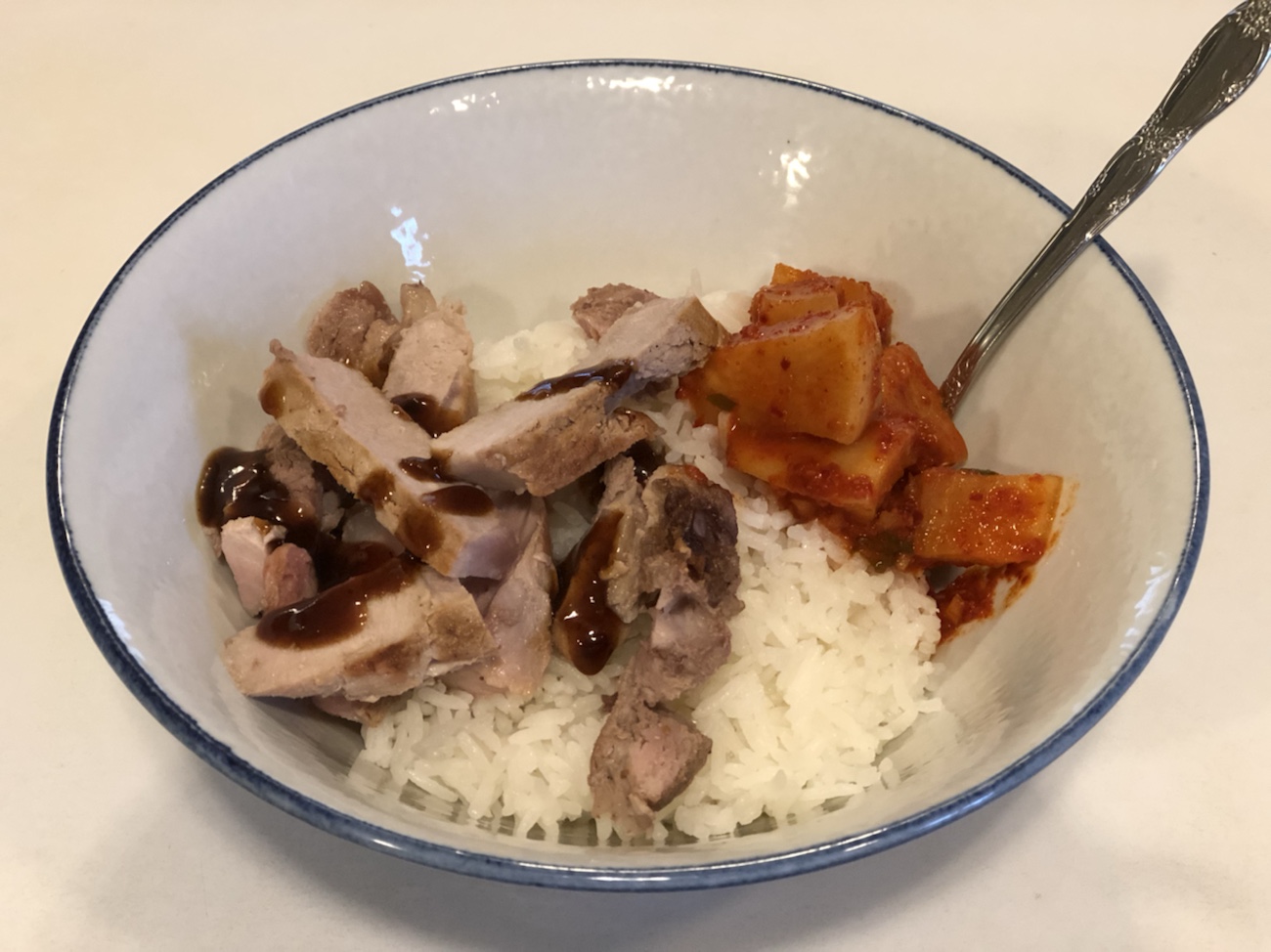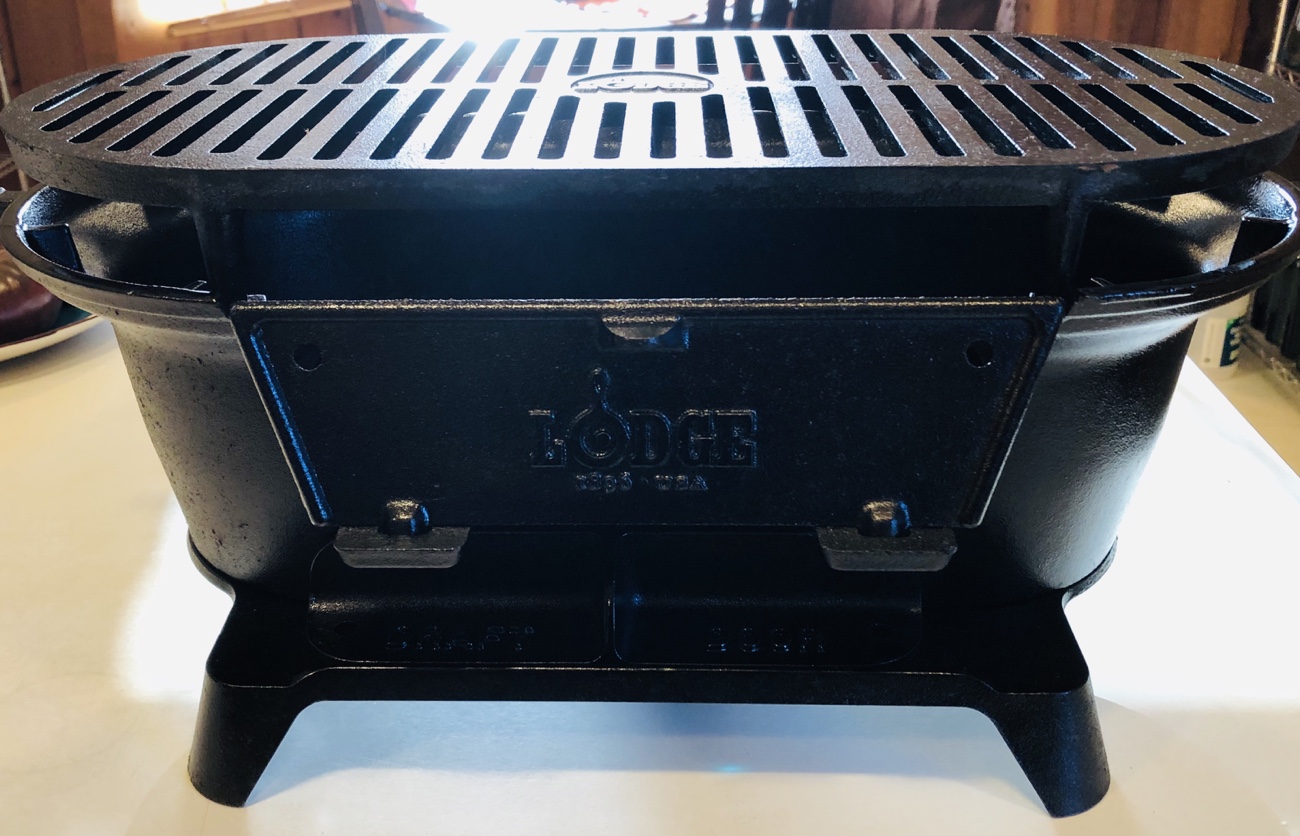
Cast iron is wonderful cookware: durable, non-stick (when properly seasoned) without potentially harmful coatings, and built to last. You also get a workout – mostly upper body – when using cast iron (bonus!). We have many Lodge cast iron products, but one of the coolest is the Lodge Sportsman’s Grill. This little charmer has traveled extensively with us, but spent the last few years in the garage and gathered a little rust. No problem – cast iron cleans up nicely!
The cleaning began with a thorough scrubbing of the disassembled grill with an S.O.S. (steel wool) pad, followed by a rinsing. This removed the surface rust, and prepared the surface for re-seasoning. Once the entire grill was dried, melted vegetable shortening was applied in an even coating across the surfaces. Tip: if possible, use warm water to rinse the cast iron after scrubbing – it will make application of the shortening go much more smoothly. We did the cleaning outside, so it was rinsed in cold water, causing the shortening to solidify upon contact and making the application process more challenging.
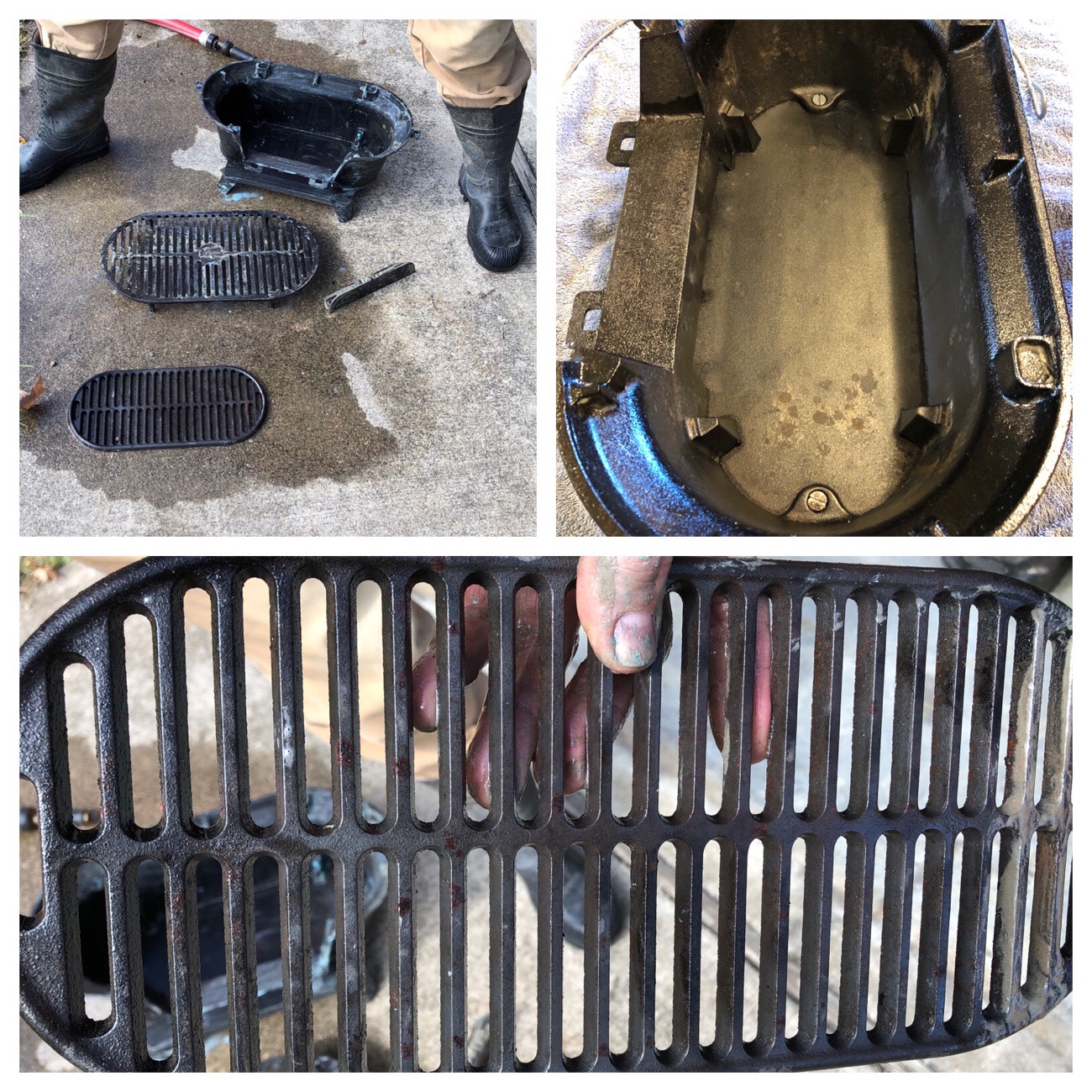
Once the unit is properly greased up (and every piece should be covered), it goes into the oven for a nice long bake. We put a sheet of aluminum foil down at the bottom of the oven to catch melting shortening, and were glad we did, since a fair amount dripped down during re-seasoning. Want more detail? See our post on seasoning cast iron.

Once re-seasoned and cooled, the grill looks like new! Good quality cast iron, even if it’s been neglected, can be transformed into a thing of beauty with elbow grease, actual grease (oil), and heat. And Lodge has helpful tips on its site for maintaining that non-stick seasoning.
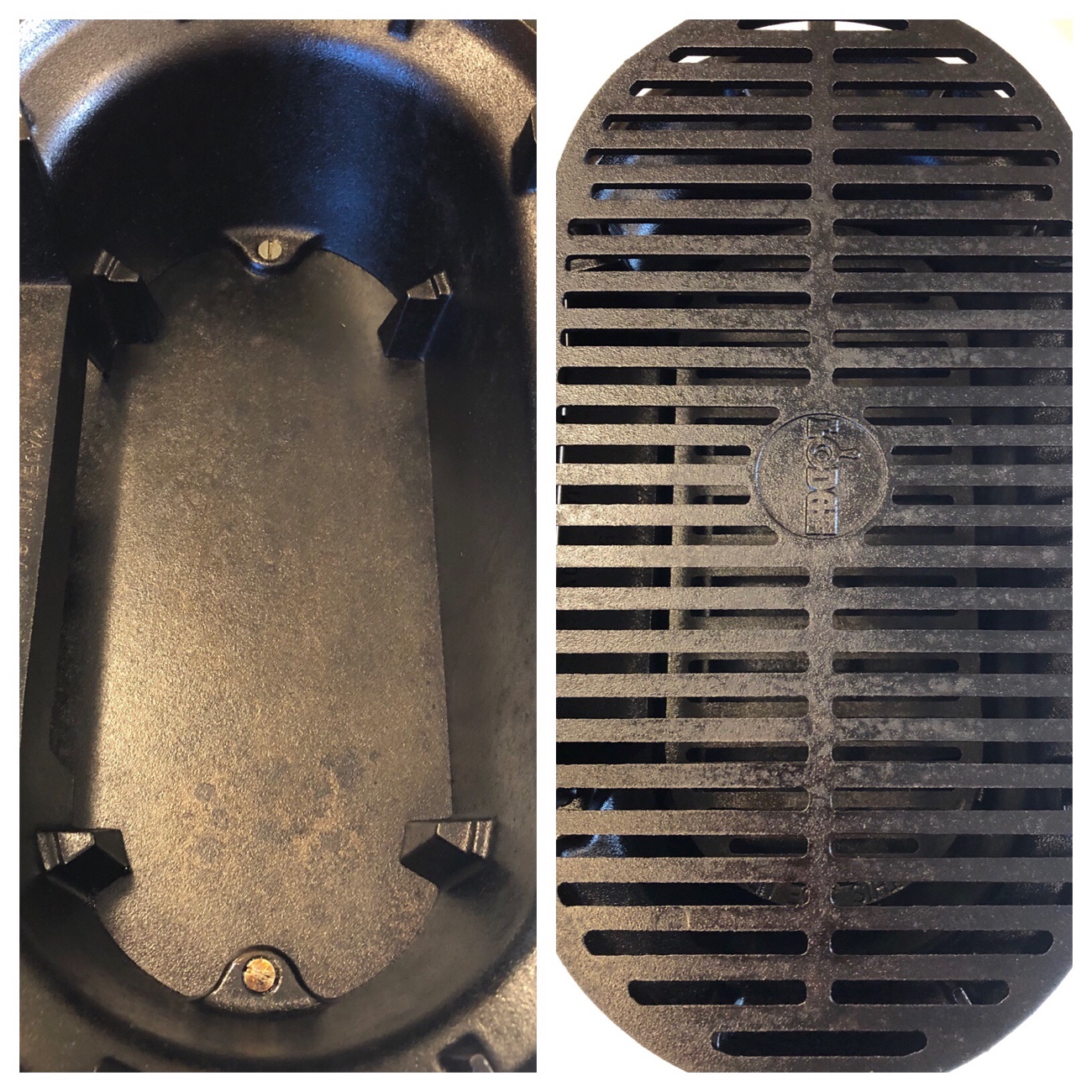
This Lodge grill may be small, but it is mighty: weighing in at 31.3 pounds, it’s not going to be blown over by a brisk wind. Because it’s all cast iron construction, the entire unit will heat up, so it must be placed in a suitable (fire resistant) location – not directly on a wooden deck, for example. And it’s for use outside only. Are you thinking “yeah, that’s pretty self-explanatory”? I think it is, too, but you should check out the questions people asked about the grill on Amazon – clearly, it’s not clear to everyone.
While we’ve had the grill for years, we have only rarely used it. The reason is that it can be seriously frustrating to try to light the charcoal and keep it lit when you don’t have the right tools for the job. Since we don’t use lighter fluid (due both to the undesirable VOCs it creates and to the unpleasant flavor it imparts), we really needed a chimney to get the coals lit…and simply didn’t have one. Guess what’s coming today? A chimney. It should go nicely with the hardwood charcoal that’s been sitting quietly in its bag, waiting to be used.
Update (several months later)…
Yesterday, we had an unseasonably warm, incredibly nice evening (and a locally-raised pork steak in the fridge), so we fired up the hibachi. The chimney, along with some firestarter blocks, made short work of turning the hardwood charcoal briquettes into glowing coals. It was very breezy, though, and that caused some uneven heating on the grill as drafts passed beneath the grate.

The hibachi worked like a charm. We cooked the steak to golden perfection, then put some foil-wrapped red potatoes on the coals and left them until bedtime (flipping them once). The coals charred the bottoms of the potatoes and roasted them through. There’s nothing like “campfire potatoes”!
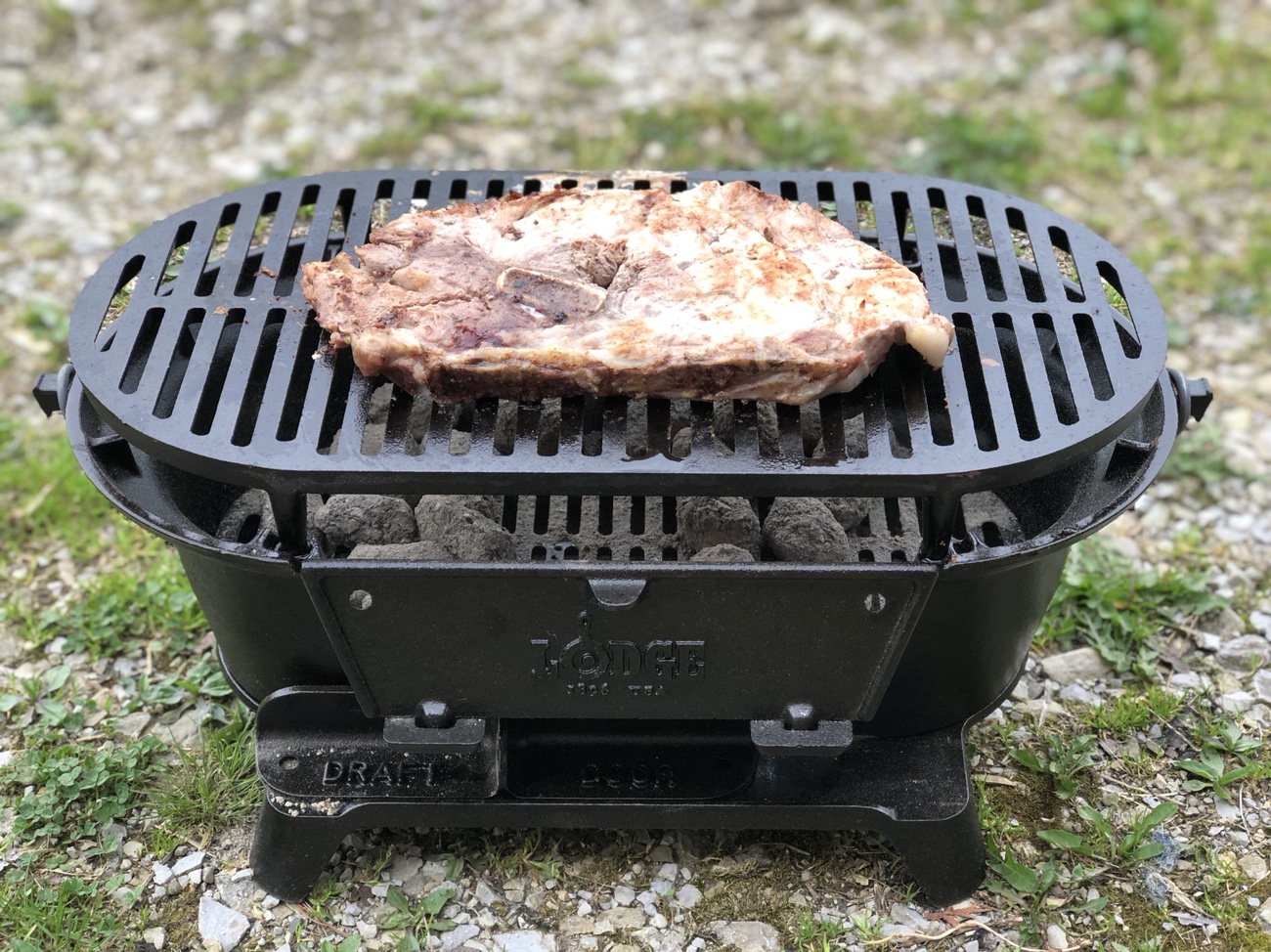
Dinner was strips of grilled pork in kalbi sauce on fresh jasmine rice, with a side of radish kimchi. Full of bright, spicy flavors…and utterly satisying! I’ve no doubt that we’ll be using the hibachi more often.
